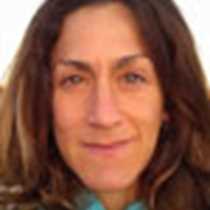Gulf of Panama, Archipelago of Otoque and Bona Islands
After a long navigation across the magnificent Pacific Ocean and thinking we were the only vessel in these waters, early this morning the National Geographic Sea Lion entered the enormous Gulf of Panama, which comprises hundreds of islets and archipelagos, some of them inhabited by humans but most of them not.
Today’s morning activities took place in a three island archipelago, called Otoque and Bona, not far south from Panama City. One of the islands, Otoque, has a small fishing town with approximately 300 people, they have a school, small clinic, some convenient stores and a ferry that does the transfer to Panama once a day.
The other two islands were where the action for us took place. By Zodiacs we surrounded the perimeters of these rookeries admiring hundreds of seabirds, which nest here for very specific reasons, one of them is the abundance in food and the other, the lack of ground-dwelling predators.
The lack of a large mountain range in mainland Panama allows the northeast trade winds to blow all the way from the Caribbean shoreline across the isthmus and still have strength to blow the warm surface water away from the Bay of Panama, leaving room for the cold water from the bottom, rich in nutrients but poor in phyto- and zooplankton to come up to the surface and fulfill the requirements for the food chain to start its course. This phenomenon of stirring the waters is call upwelling, and it is not just produced by the winds, but also when there is presence of sea mounts or cold-water currents that make the colder water rise.
The second reason for all the Brown Pelicans, Magnificent Frigatebirds and Brown Boobies to nest here is the lack of land-dwelling predators, as mentioned before, with the exception of some iguanas and an occasional sighting of Peregrine Falcons. Today we were lucky enough to see both of them, a beautiful peregrine falcon up on a ledge and a couple of large male iguanas sun basking.
The Pelicans and Frigates nest on trees, taking long hours to build their nests. While the boobies clear a patch in the naked rock-ledges and with their own feathers and dry leaves make a comfy mattress for their young.
After our Zodiac cruises around the island were successfully accomplished, National Geographic Sea Lion left anchor and started the navigation toward our anchoring spot just outside Panama City in order to wait for our pilot to start another great adventure, the crossing of the Panama Canal.




